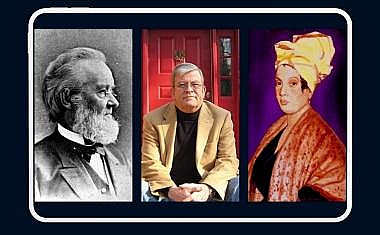
Portraits Of 6 Real-life Vigilantes
In an ideal world, justice would prevail for every transgression. However, reality often falls short, and people resort to force and violence to exact revenge against those they perceive as wrongdoers.
Marianne Bachmeier
In May 1980, someone discovered the lifeless body of Marianne Bachmeier’s seven-year-old daughter, Anna, in a cardboard box along the bank of a local canal. A prime suspect swiftly emerged: Klaus Grabowski, a 35-year-old neighbor with a criminal history of child molestation.
Grabowski confessed to the murder of the young girl but denied any sexual misconduct, instead claiming that Anna had attempted to extort money from him.
As the case went to trial at the Lübeck District Court in 1981, Grabowski's defense shocked the court. They attributed Grabowski’s actions to a hormonal imbalance, a consequence of his voluntary castration after his prior offenses.
On the third day of the proceedings, Marianne Bachmeier smuggled a .22-caliber Beretta into the courtroom and shot Grabowski. In 1983, a court convicted “The Revenge Mother” of premeditated manslaughter, and sentenced her to six years in prison.
Recommended article

Vigilantism - Taking Justice Into Your Own Hands
Throughout history, individuals, groups, and organizations have taken matters of justice into their own hands. But what exactly are vigilantes, what drives them, and are their actions justified?
Los Pepes
Notorious Colombian drug lord Pablo Escobar's vast cocaine empire left a dark stain on the nation. Supported by corrupt authorities, his tyrannical rule seemed impenetrable. But the murders of two rival cartel members triggered a chain reaction that caused his demise.
Fidel Castano, the other cartel’s boss, helped form Los Pepes, which is short for “Perseguidos por Pablos Escobar”, translating to “People Persecuted by Pablo Escobar”. Los Pepes violently targeted anyone connected to Escobar, including friends, family, supporters, and officials. In 1993, Colombian police and military forces made their way to Escobar's hideout and eventually shot and killed him while he was on the run.
Although debate surrounds Los Pepes’ precise role in Escobar’s death, their actions paved the way for the end of a violent era in Colombia. Their campaign also caused injuries and fatalities among the civilian population.
Citizens of Skidmore, Missouri
Ken McElroy's reign of terror gripped the residents of Skidmore, Missouri. For years, the police suspected him of many crimes, but the wheels of justice seemed to turn agonizingly slow, if at all. The situation changed in 1973 when 14-year-old Trena McCloud gave birth to McElroy’s child. At first, she moved in with him, but she later escaped to her mother’s house. In retaliation, McElroy shot the family dog and set fire to their home.
The authorities charged McElroy with assault, arson, and rape, but dropped the charges after Trena agreed to marry him. McElroy had threatened to burn down her mother's new house, just as he had the old one.
In 1980, McElroy shot the town’s elderly grocer in the neck. Convicted of attempted murder, his release on bail only fueled the community’s fear and anger. In July 1981, the town's simmering rage and despair erupted and culminated in a meeting focused on Ken McElroy. The exact words are unknown, but it’s clear they decided McElroy had to leave.
Someone gunned down McElroy in his pickup after he left a local pub. With Trena in the truck and 46 people witnessing the event, no one called for an ambulance. While Trena identified a single shooter, no other observer corroborated her account.
The sheriff, who warned against vigilantism, left town just before someone killed McElroy. To this day, authorities have charged no one in connection with McElroy’s death.
Bernhard Goetz
In December 1984, four young African American men accosted 37-year-old Bernhard Hugo Goetz Jr. on a New York City subway train. In response, Goetz shot them with a.38-caliber Smith & Wesson revolver. Though the men survived, the encounter left Darrell Cabey paraplegic and brain-damaged.
Days into his escape, Goetz turned himself in to the Concord, New Hampshire Police Department. He claimed self-defense and blamed the authorities’ failure to deliver justice after he had been robbed three years prior.
The court acquitted “The Subway Vigilante” of all attempted murder and assault charges, but sentenced him to eight months in jail for the possession of an unlicensed gun. In 1996, a jury awarded Cabey $43 million in a civil suit. Goetz filed for bankruptcy.
Recommended article

6 Real-life Vigilante Stories
When the law has failed, it's easy to sympathize with a heroic vigilante who takes justice into their own hands. But vigilantism is way more complicated than it seems, as the following six examples show.
Michael Mullen
35-old Michael Mullen executed registered sex offenders, Hank Eisses and Victor Vazquez in 2005. To gain access to their apartment, he impersonated an FBI agent and claimed to investigate threats against registered sex offenders. Initially, Mullen contacted the police and media, threatening to murder more child sex abusers. However, he soon turned himself in.
Mullen’s actions stemmed from a dark past: childhood sexual abuse by a neighbor left him deeply scarred. He also claimed outrage over the recent case of Joseph Edward Duncan III., who had murdered an Idaho family and kidnapped the two youngest children as sex slaves.
San Jose Mob
In November 1933, police arrested Thomas Harold Thurmond and John M. Holmes for the abduction and murder of Brooke Hart, the 22-year-old scion of a prominent department store owner in San Jose, CA. After word had spread that Thurmond and Holmes would submit a plea of not guilty by reason of insanity, an enraged mob congregated outside the jail.
During the day, rumors of a lynching circulated. When darkness fell, thousands had assembled in St. James Park. In this tense atmosphere, Governor James Rolph announced he would not deploy the National Guard and even promised a pardon to anyone involved in an act of lynching.
By midnight, the mob overwhelmed the police and hanged Thurmond and Holmes. One Los Angeles radio station even broadcasted the lynching live.

Buy Wicked Justice
Wicked Justice is the second book in "The Empath Series", a paranormal suspense series about a reclusive empath rejoining the world and the people he left behind.













